
Key Points
- S&P 500 Equal Weight vs. Cap Weight Ratio Continues to Stabilize
- Breadth Metrics on the NYSE Improve, A/D Line Retakes the Moving Average
- New Lows on the NYSE Make a Move to the Downside
- S&P 500 Breadth Slightly Weaker
- Short-Term Trends Reversing for Small Caps
Chart in Focus:
The S&P 500 Equal Weight Index relative to the S&P 500 continues to stabilize. In the notes below we highlight improvements in breadth metrics across U.S. markets and we would expect to see this ratio begin to confirm. For now, investors are favoring the larger stocks in the S&P 500. A break above the 50-day 200-day moving averages is needed to change this view.
The 14-day RSI has made another higher low as the ratio stabilizes. We now want to see this divergence confirmed with the move back above the moving averages.
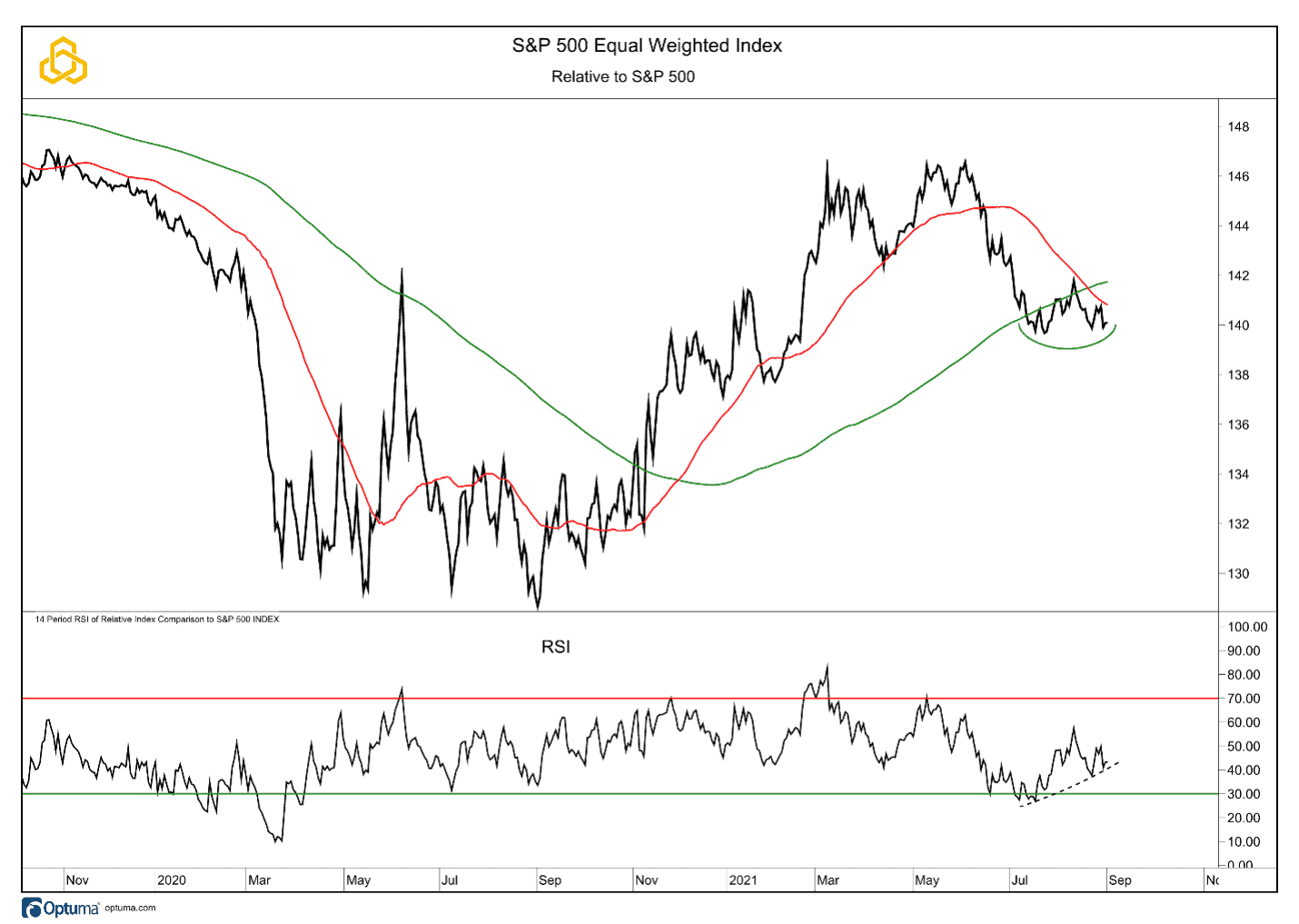
NYSE Breadth
Last week we pointed out that the Advance/Decline for the NYSE was beginning to improve. That improvement has continued this week with the indicator now retaking the 50-day moving average. There is still a divergence in play as the A/D Line has not made a new high with the most recent record highs for the S&P 500 but, as we have been saying, this divergence is only meaningful if price breaks below key support levels.
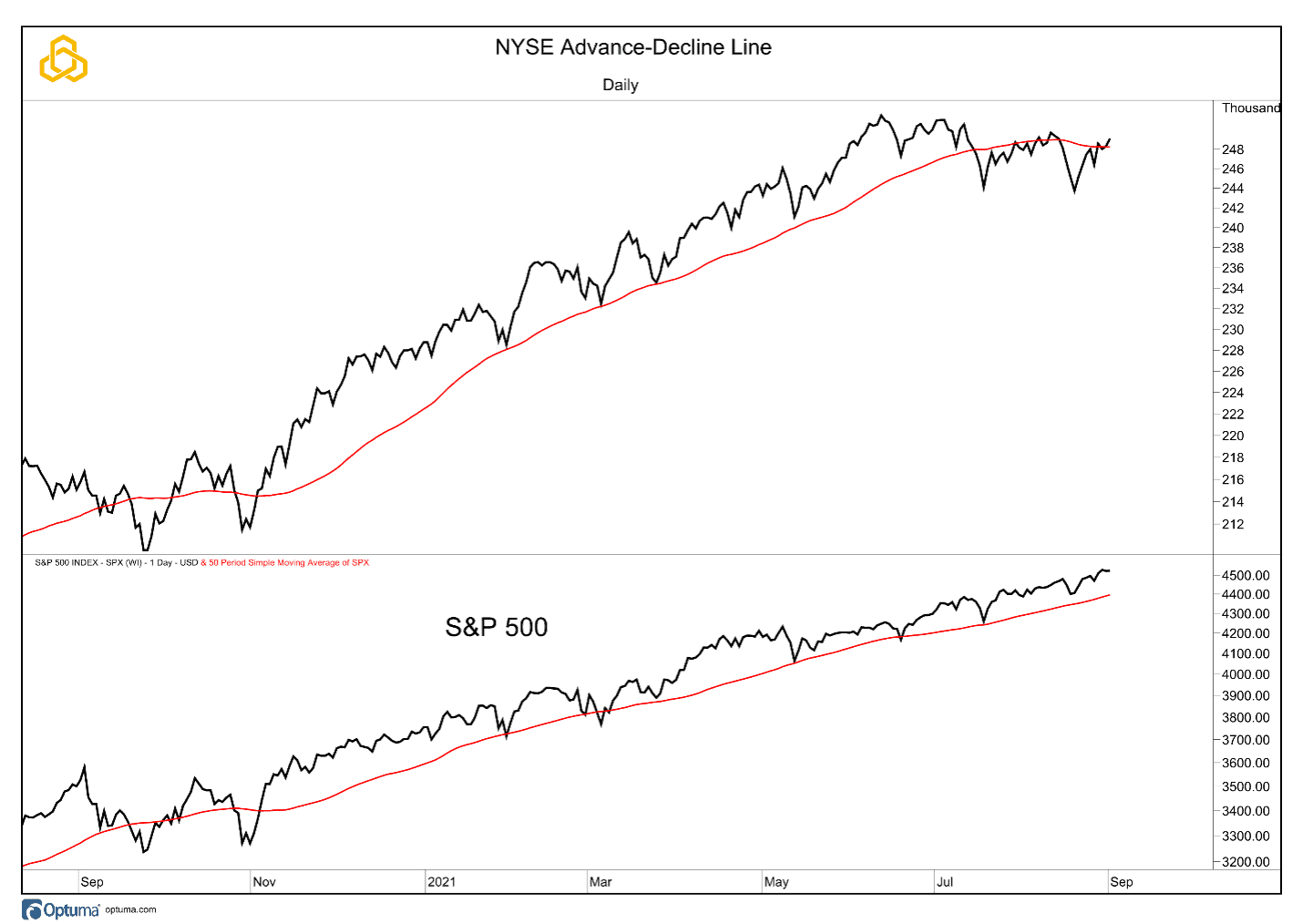
The NYSE’s Advancing – Declining Volume Line has also improved again this week but does remain below the declining 50-day moving average. At the same time, the divergence with the price of the S&P 500 is also still in play.
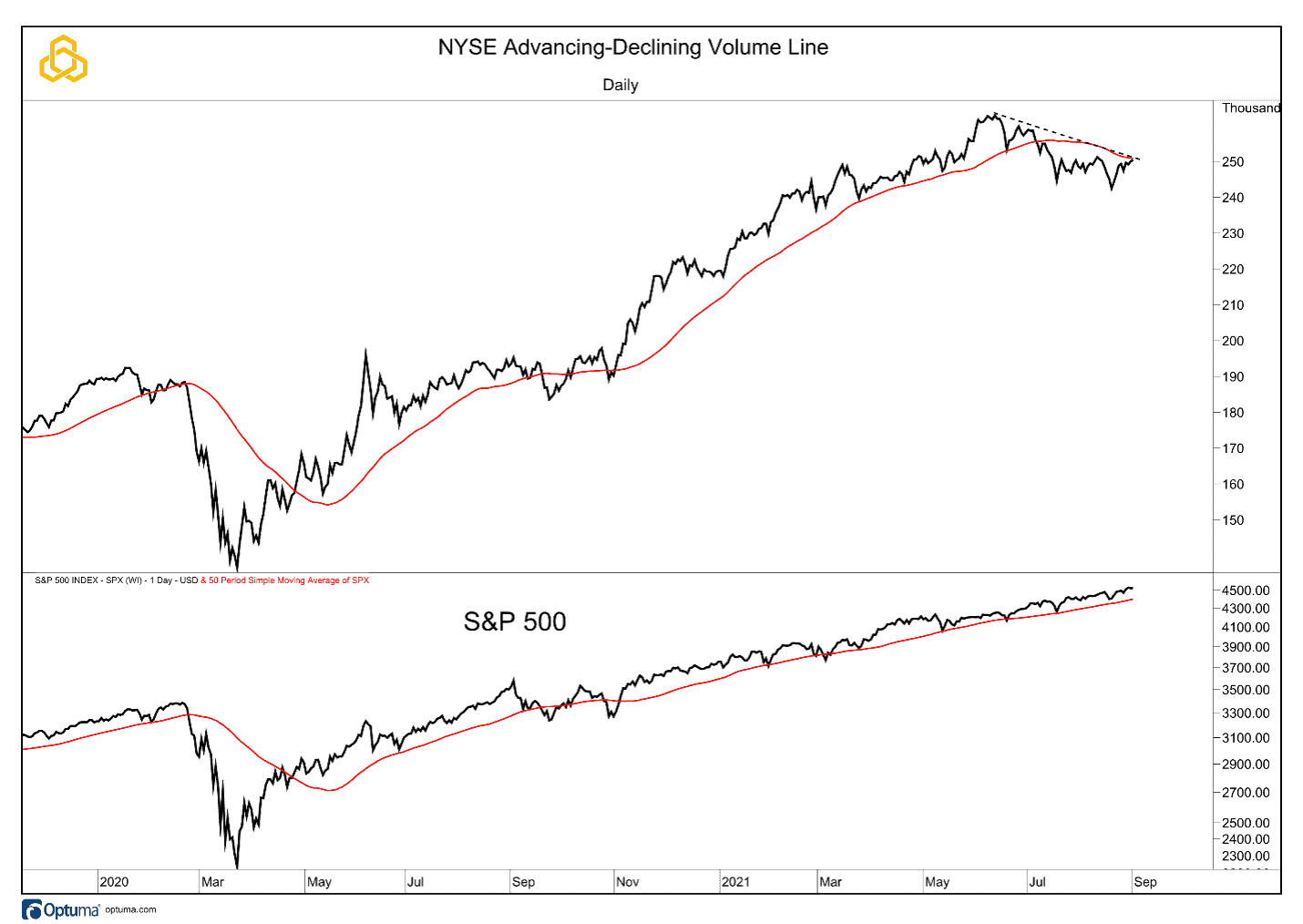
The 5-day moving averages of issues on the NYSE making new 52-week and six-month lows have staged a big reversal over the past week. A continuation of this trend and a break below the 1% level would be a bullish data point for the equity market.
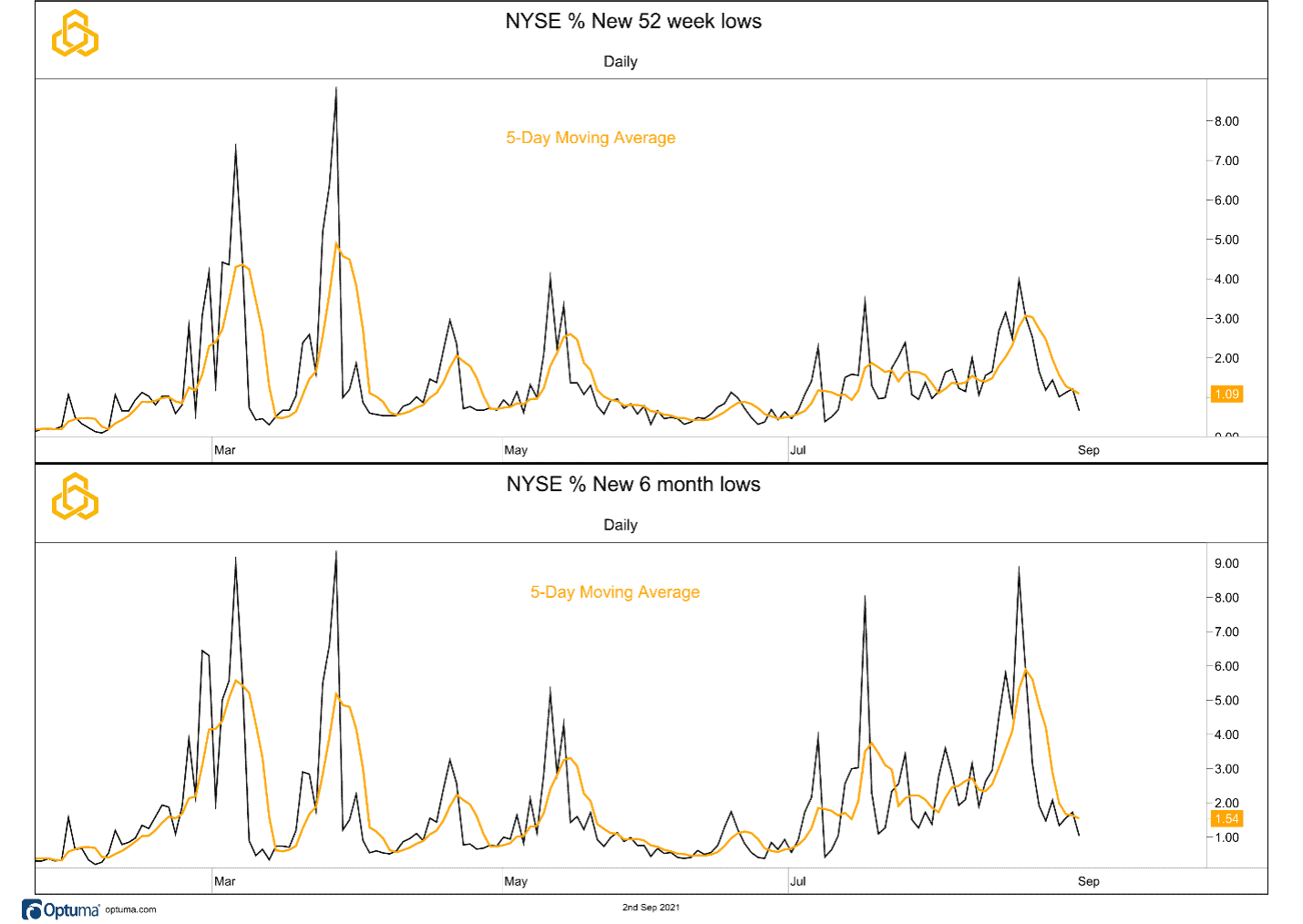
The 5-day moving averages of the percentage of NYSE issues making new 52-week and six-month highs has seen an improvement this week. Both metrics are close to breaking above their summer consolidation peaks.
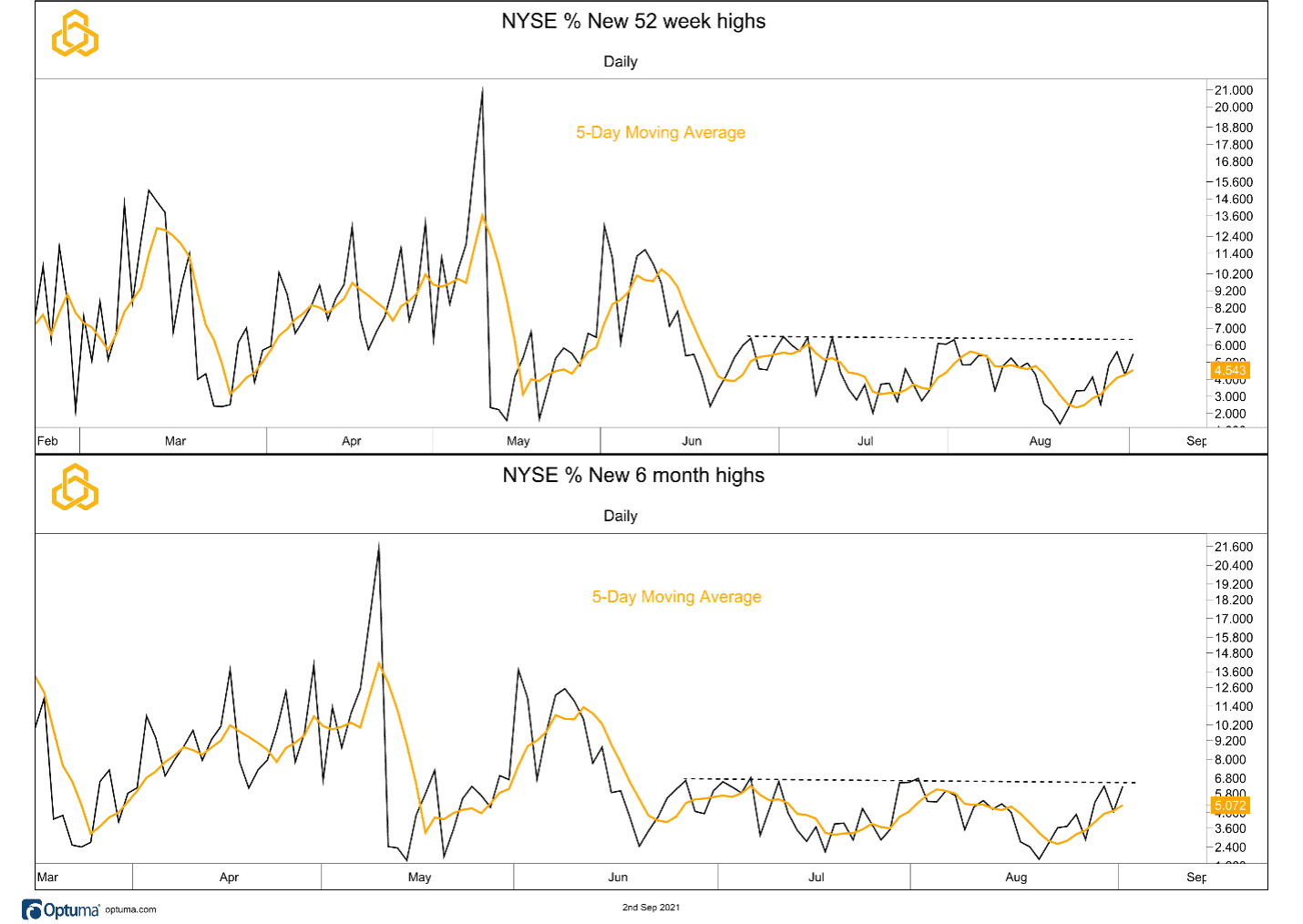
The percentage of issues on the NYSE that are trading above their respective 200-day moving averages remains in the downtrend and is virtually unchanged from the levels that we saw last week. A move back above the 60% level would be a bullish development that adds to the improvements in the metrics discussed above.
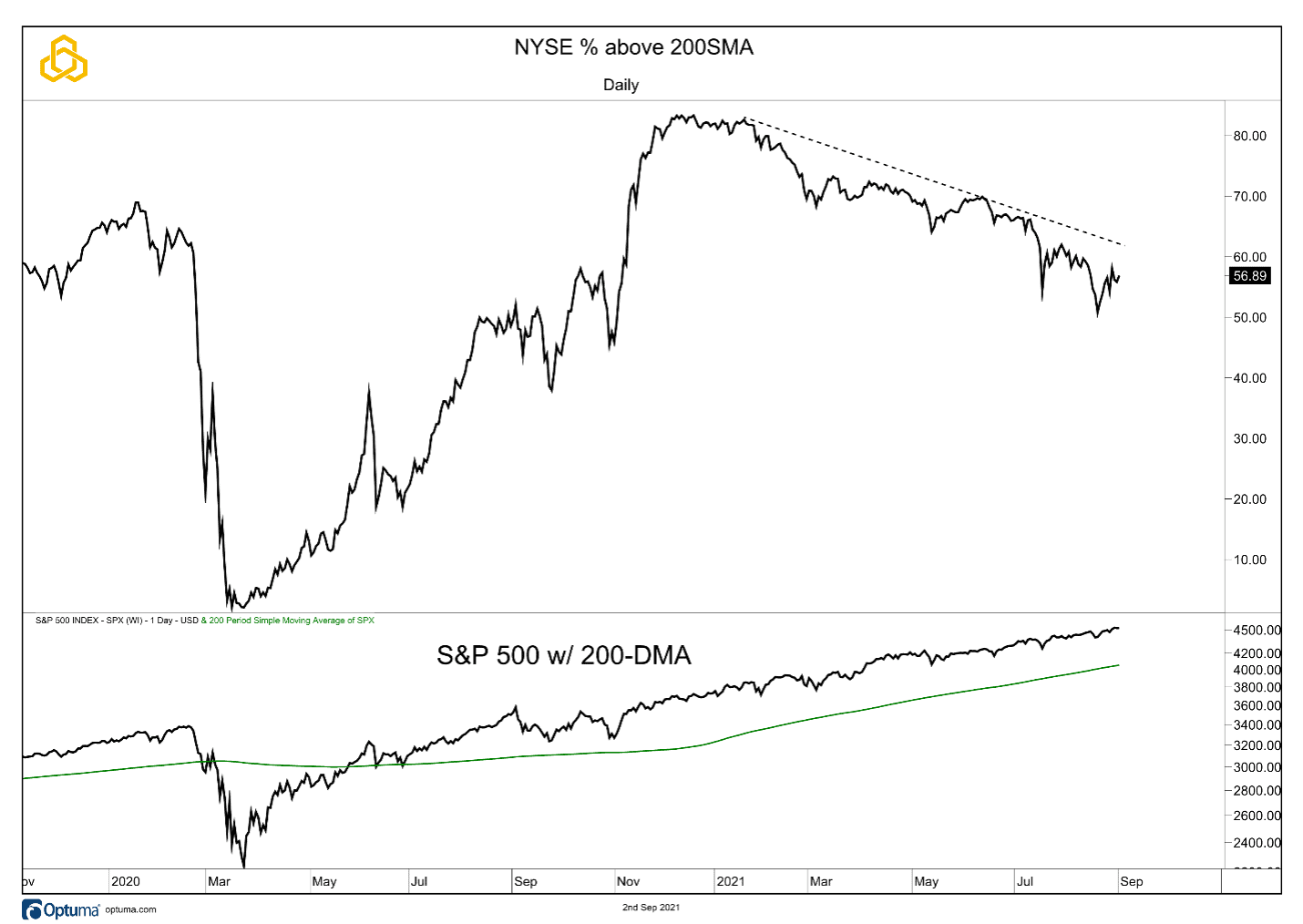
The percentage of NYSE issues trading above their own 50-day moving averages has also improved this week to regain the 50% level. Additionally, this metric has made a higher low and a higher high recently, the first steps in reversing the downtrend that has been in place for much of 2021.
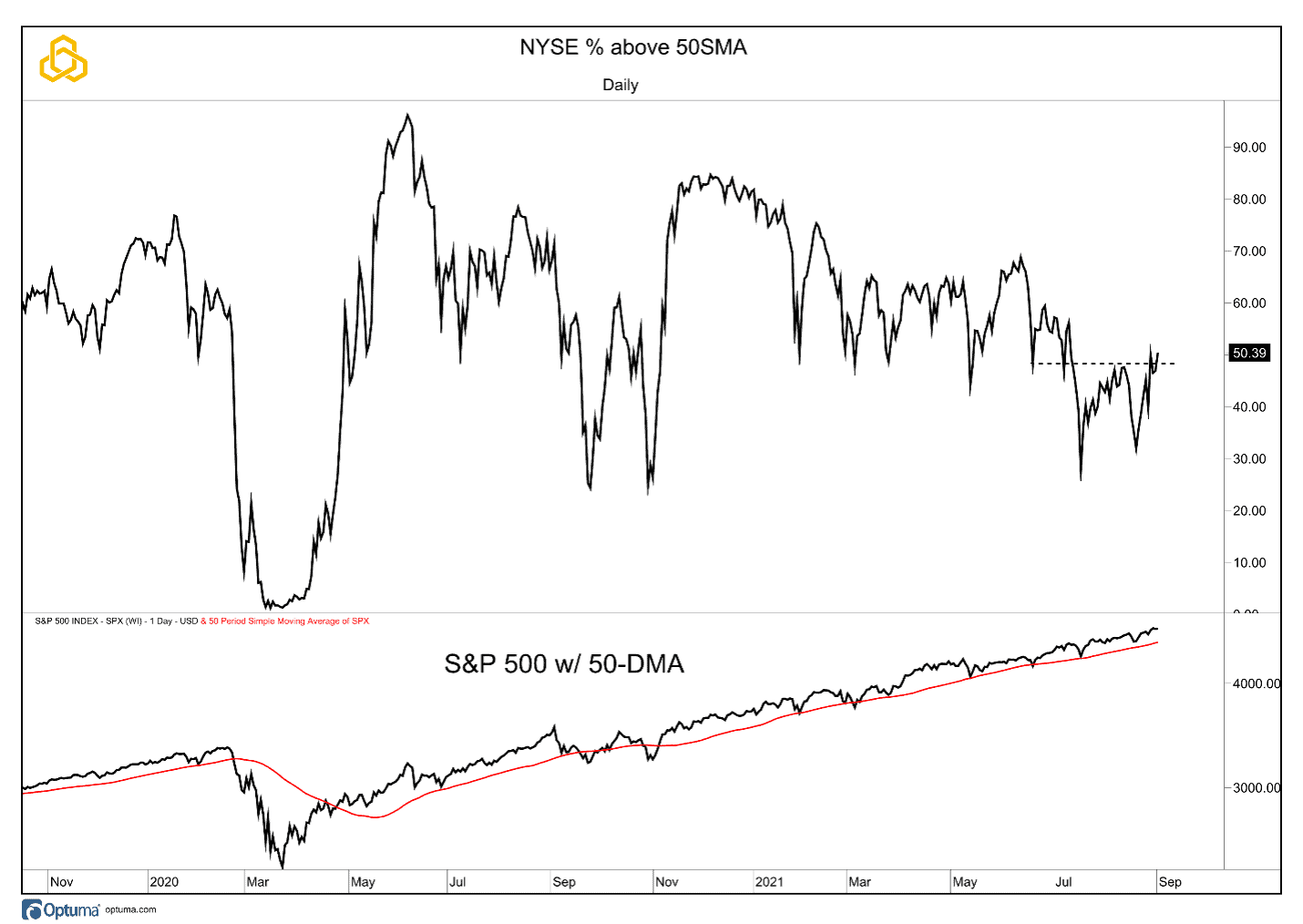
After making a higher low when the S&P 500 tested its 20-day moving average, the percentage of stocks on the NYSE trading above their own 20-day moving averages has now made a higher high as well. This metric is close to reclaiming the 60% level that would signal that a “healthy” majority of names are in short-term uptrends.
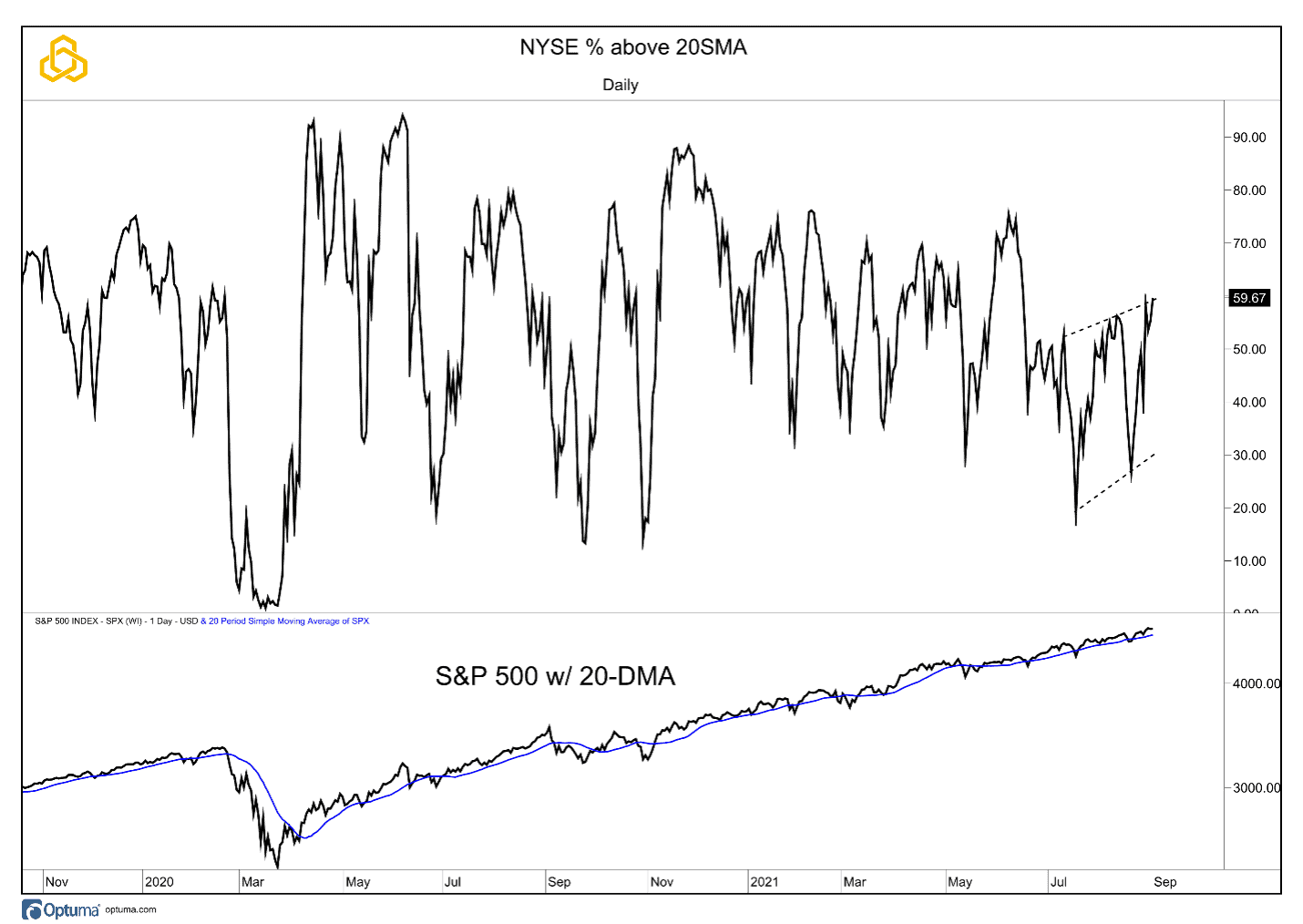
S&P 500 Breadth
Breadth metrics for the S&P 500 weakened a bit over the past week but all the trend metrics remain above 60%:
- Advance/Decline Line: New high this week.
- Percent Above Their 200-Day Moving Average: 78% from 81% last week.
- Percent Above Their 50-Day Moving Average: 65% from 68% last week.
- Percent Above Their 20-Day Moving Average: 61% from 65% last week.
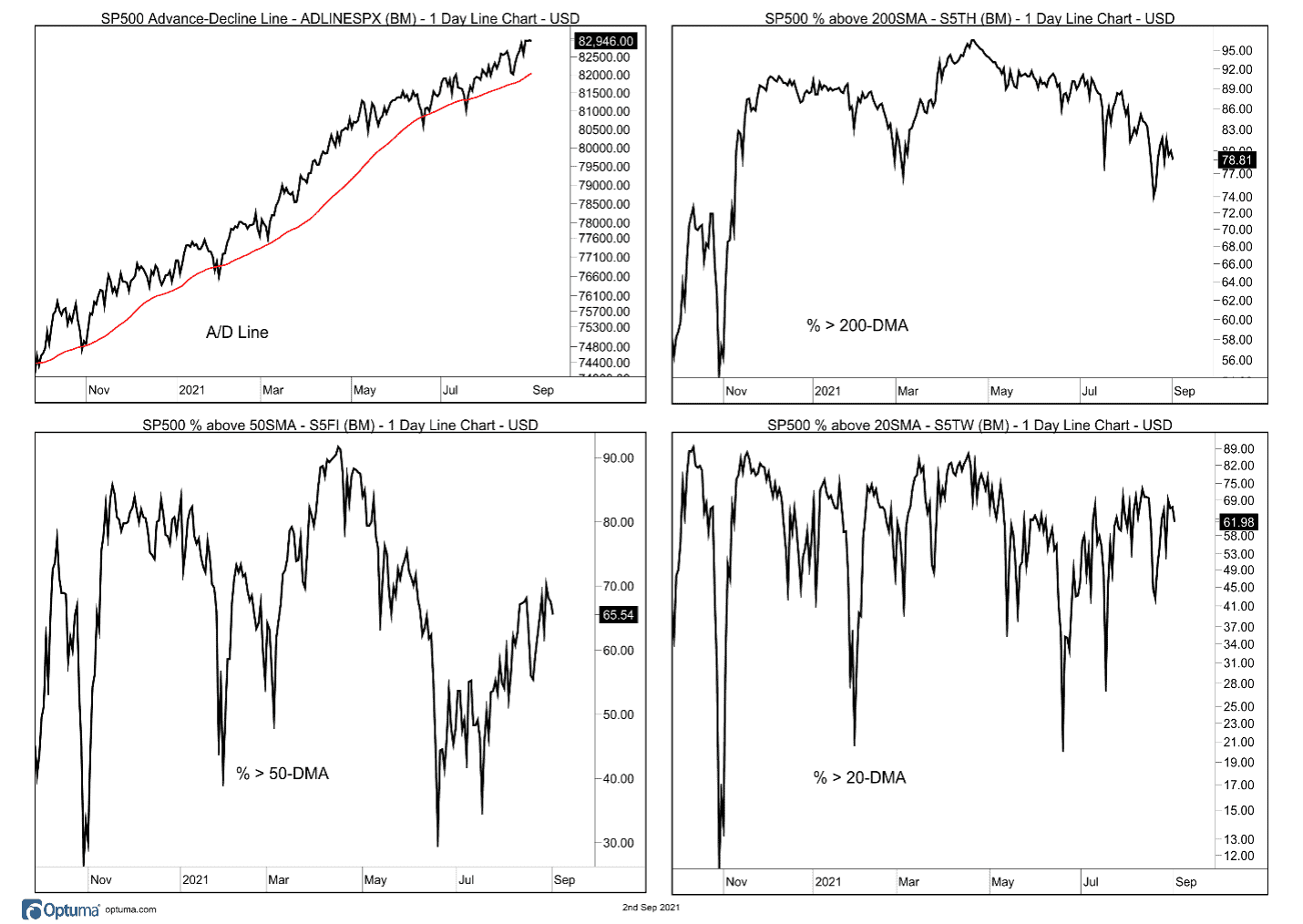
Small Cap Breadth
Breadth metrics for the S&P 600 Small Cap Index have improved week-over-week, especially for the shorter-term trend metrics.
- Advance/Decline Line: Trying to retake the 50-day moving average after holding support.
- Percent Above Their 200-Day Moving Average: 62% from 61% last week.
- Percent Above Their 50-Day Moving Average: 58% from 50% last week.
- Percent Above Their 20-Day Moving Average: 66% from 58% last week.
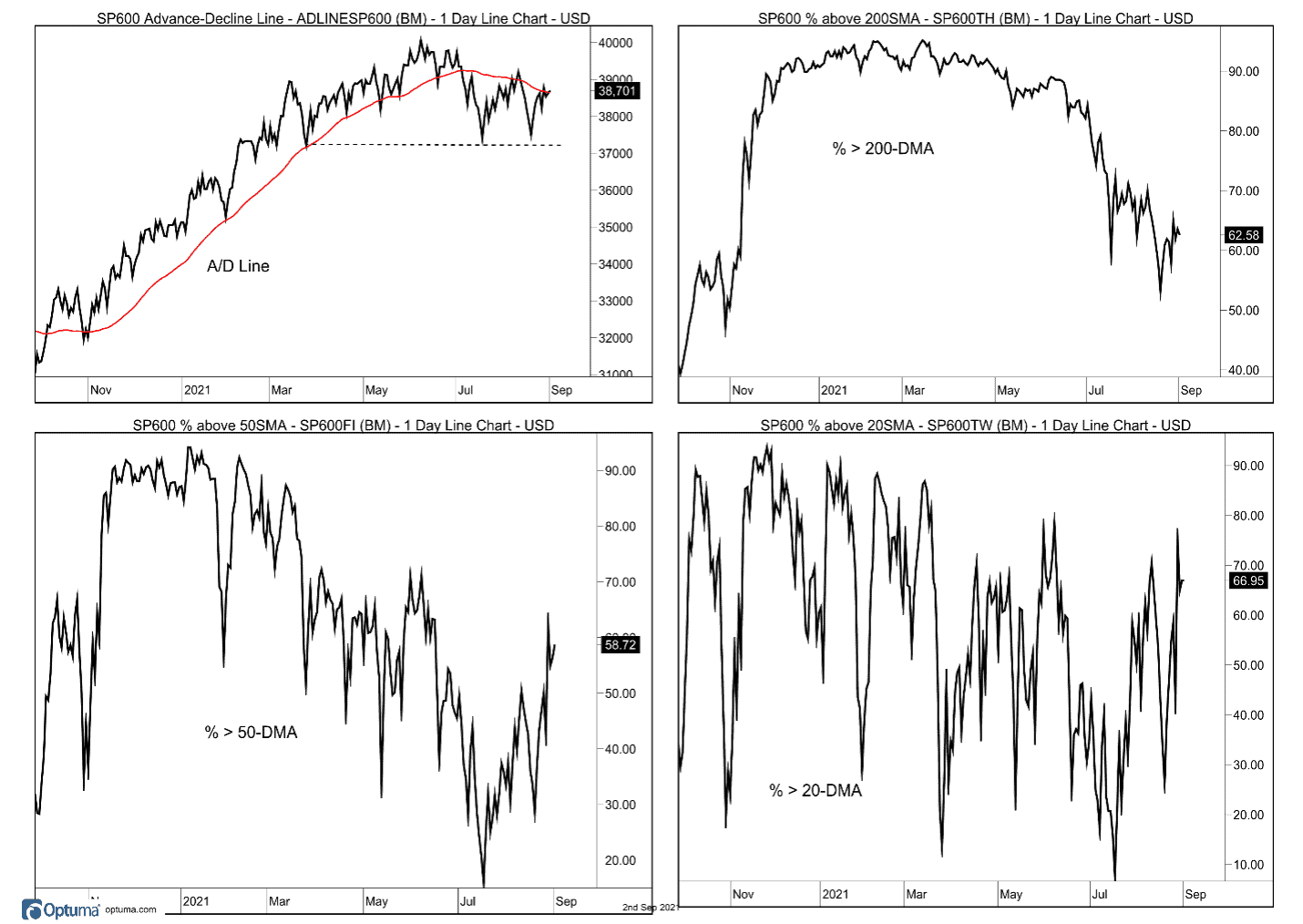
Note that the 20 and 50-day metrics have now made multiple higher highs and higher lows.
Take-Aways
Disclosure: This information is prepared for general information only and should not be considered as individual investment advice nor as a solicitation to buy or offer to sell any securities. This material does not constitute any representation as to the suitability or appropriateness of any investment advisory program or security. Please visit our FULL DISCLOSURE page.
